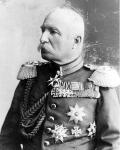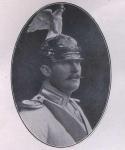-
Posts
2,234 -
Joined
-
Last visited
-
Days Won
55
Content Type
Profiles
Forums
Blogs
Gallery
Events
Store
Everything posted by Glenn J
-
Charles, born 7 October 1861 at Graudenz and indeed spent much of his earlier career at the HKA. At mobilisation he became commander of RIR 10 and promoted to Oberst on 5 September 14. Relinquished command of RIR 10 on 20 November 14 following a wound and on recovery assumed command of RIR 82 on 20 January 1915. On 2 January 1917 commander of 244. Infanterie-Brigade in 237 Infanterie-Division the East. Generalmajor on 22 March 1918 and commander of 14. Division on 9 July 1918. Plm 4 Ocober 1918 for conduct during the defensive battles in Champagne. Retired 12 August 1919. "Tannenberg" promotion to char. Generalleutnant on 27 August 1939.
-
Charles there will be more - when you include all the recalled general officers who served during the war. The Ehrenrangliste alone lists a furthe 58 officers who were recalled and either died in the rank of or attained by wars end the rank of Generalleutnant. Of course not all of these were of noble birth. Regards Glenn
-

Paul Julius Hans Tieschowitz v. Tieschowa
Glenn J replied to David M's topic in Deutsche Kaiserreich: Man spricht Denglish
-
Joe my tentative identification of your Bavarian Major is Major Johann Seitz, commanding officer of I./21. Infanterie-Regiment at Fürth between 25 January 1907 and 23 February 1908. Herr Seitz only commanded the battalion for a year before taking up a retired officers' post as a district officer in Landwehr-Bezirk Amsberg. He commanded at mobilisation the Ersatz-Bataillon of Reserve-Infanterie-Regiment Nr. 7 and briefly commanded II./21. Reserve-Infanterie-Regiment in November 1914. From 1 March 1915 through 1 June 1917 he was commanding the II. Ersatz-Bataillon of 6. Infanterie-Regiment followed by command of Garnison-Bataillon Amberg. Promoted to char. Oberstleutnant on 10.4.15, he retired as a char. Oberst. The photograph shows him with the Prince Luitpold Jubilee Medal, the Bavarian Officers' Long service Decoration and the Knight's Cross of the Austrian Franz Joseph Order he was awarded on 12 June 1891 in 13. Infanterie-Regiment. The photograph has to be between his appointment as the commander of I./21 in January 07 and his award of the Military Merit Order 4th Class on his transfer to "z.D." status in February 1908. Regards Glenn
-
Joe, I don't know how you dig these up!! This guy is driving me nuts. My initial thought was a Stabstrompeter from a Line Dragoon Regiment pre 1889; then I noticed the Brandenburg cuffs. For the life of me, I cannot think of a mounted unit which utilised Brandenburg cuffs but this chap is wearing a mounted personnel waist belt?? And then the trousers appear to be the same colour as the Waffenrock - most strange unless Bavarian infantry but that Portepee does not look Bavarian and still we are left with that waist belt. Regards Glenn
-
Joe, there is a bit of a problem with the old boy from Baden; His uniform is something of a mismatch. Although the Stabshoboist/Musikmeister wore the double cuff rings from 1889 to 1908, a special shoulder board was introduced in 1898. If this photograph is pre 1898 he should be wearing his sword suspended from a normal waist belt and following that he would be wearing the the special Musikmeister waist belt. His shoulder straps do not conform to any Baden Infantry Regimental pattern and as a Stabshoboist/Muskimeister he should really be wearing chin scales on the helmet. Regards Glenn
-
Dave, Hauptmann v. Rabenau's "Die deutsche Land- und Seemacht und die Berufspflichten des Offiziers" 1906, give a table showing various routes to a commission, both cadet and direct entry as a Fahnenjunker. Normally Fahnenjunker were promoted directly to Portepee-Fähnrich, whereas as ex-cadets usually utilised the rank of char. Portepee-Fähnrich. But generally speaking, a Fahnenjunker ultimately commissioned in August 1898 would normally have entered service on 1 April 1897. From the example quoted: 1 April 1905: Entry in the Army as a Fahnenjunker. 6 months service and Fähnrich's examination, followed shortly thereafter by promotion to Fähnrich. October 1905: Attend War School. Jume 1906: Officer's Examination, followed by regimental duty and vote by officer corps. Promotion to Officer in approximately August 1906. It seems the average for a direct entry non cadet from entry to commissioning was 15-16 months. Regards Glenn
-
Joe, Generalmajor Karl Leichtenstern, Commander of the 10. Infanterie-Brigade (renamed as 8. Infanterie-Brigade on 1 April 1901) from 2 June 1899 to 16 May 1902. The Commander's Cross of the Italian Order of Saint Maurice and Lazarus confirms the identity of this Metz based brigade commander. Regards Glenn
-
Joe, I do not have a positive ID but possibly we could narrow this gentleman down to being either the General officer Commanding the VIII. Armeekorps or of the 30. Infanterie-Brigade or the Commandant of Coblenz. I would tentatively date the photograph between 1890 and 1900 (introduction of the General Officer's embroidery on the service tunic in 1900). Regards Glenn








